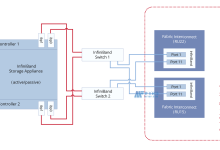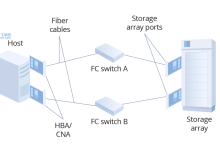linux C programming is a powerful and versatile language that can create powerful and versatile applications. One of the most important aspects of a successful C program is the efficient use of files, as they are essential for storing and retrieval of information. To maximize the efficiency of file management in Linux C programming, there are a few important considerations that must be taken into account.
The first consideration is the usage of a relevant file system. There are several different file systems available such as reiserfs, ext2, and ext3. It is important to choose the right file system for the task at hand as each one has its own pros and cons. For example, reiserfs is more reliable and can provide faster access than ext2.
Once the best file system has been selected, the second consideration is for developers to create a data structure that is suitable for file management in Linux C programming. This data structure should not only contain data, but also provide information about the organization of the data. In addition, the structure should also include functions that allow for the efficient retrieval, storage, and manipulation of the data.
Finally, developers should design their code to access files in a consistent manner. This consistency helps to ensure that programs will continue to function correctly, even when new versions of programs are added or updated. For example, if the data is stored right after a loop, the layout of the loop should not change unless an important reason to do so appears. This will make the code more efficient and reliable.
Using a file system that is appropriate to the task and designing data structures that are consistent and optimized is essential for efficient file management in Linux C programming. By taking these steps, developers can ensure that their programs will be successful and optimized.
An example of efficient file management code in Linux C programming is shown below:
#include
#include
// Create a data structure
struct myData{
char name[128];
int age;
float salary;
};
// Create the file operation functions
int write_myData(myData data){
FILE *datafile;
datafile = fopen(“data.txt”, “a”);
fprintf(datafile, “%s-%d-%.2f\n “,
data.name, data.age, data.salary);
fclose(datafile);
return EXIT_SUCCESS;
}
int read_myData(myData *data){
FILE *datafile;
datafile = fopen(“data.txt”, “r”);
fscanf(datafile, “%[^-]-%d-%f\n”,
data->name, &data->age, &data->salary);
fclose(datafile);
return EXIT_SUCCESS;
}
int main(){
return 0;
}
In conclusion, efficient file management is a critical aspect of programming in Linux C. To ensure that programs are properly optimized, data structures should be designed with compatibility and optimization in mind. Additionally, consistent access to files should be implemented throughout the code. By considering these points and making use of suitable file systems, the efficiency of file management in Linux C programming can be maximized.

 国外主机测评 - 国外VPS,国外服务器,国外云服务器,测评及优惠码
国外主机测评 - 国外VPS,国外服务器,国外云服务器,测评及优惠码









